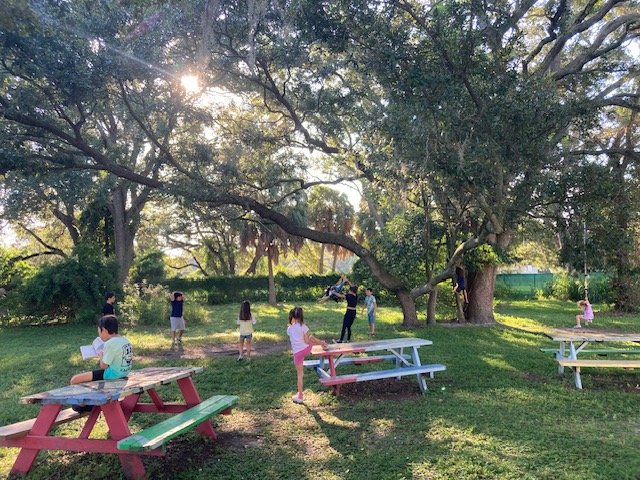
"The function of education is to teach one to think intensively and to think critically. Intelligence plus character — that is the goal of true education." - Martin Luther King Jr.
Our overarching belief is that small schools are best for children and that instruction that is tailored to the current performance levels of a student (especially in math and literacy) is best, independent of how old or in what grade a child is.
Math
In math, we use Eureka math. Eureka was selected as our math program for a few reasons; it's used by a lot of school systems and independent schools like ours, it's challenging and it's print materials are available in both Spanish and English. Eureka is the one piece of our educational program that is created purely from an outside source. We supplement Eureka with teacher-created materials. Eureka math is widely used at various bilingual schools such as Mundo Verde in DC.
English Literacy
In English literacy, we embrace a balanced approach to reading. We use Jolly Phonics for our emergent readers and Words Their Way in our intermediate groups (generally through 3rd grade.) Words Their Way is hands on and more interesting than just studying phonics. It helps children find patterns prevalent in English spelling, and helps them to become better readers and spellers in the process.
We strive to have a balanced approach to reading meaning that classrooms should be language rich. Read alouds are frequent and conversation is frequent, because oral language skills and literacy skills both depend on each other. Silent reading time in which students select their own books is valued as much as the leveled books that our teachers select -- based on the level of their student -- for our small reading groups. As they learn to write, students write for various purposes and in various ways -- both informally, in journals that are ungraded and in which students can select topics -- and in more formal ways, such as learning to write a standard American style 5 paragraph essay. Students write to inform, to persuade and to entertain.
Spanish Literacy
It is easier for children to learn to read in Spanish than in English. Spanish vowels each only make one possible sound (unlike English) and there are very few words in which a letter is silent or there are exceptions to spelling patterns. For this reason, there is not a set phonics program for our emergent readers in Spanish. Once students learn the sounds of the letters in the Spanish alphabet, we use lots of repetition and practice to read.
Units of Inquiry
Units of Inquiry are essentially science and social studies units that we teach to students in grades 2-4. These units come from EL Education, in New York state, However, unlike Eureka Math, in which we take their curriculum and use it generally as it is; with our Units Of Inquiry we use EL Education as more of a leaping off point. The units themselves come from EL Education; they include The Amazing World of Birds, Natural Disasters, Water, Athletes for Social Change and Toys and Games Around the World. The "essential questions" -- the questions that students investigate -- come from EL Education, and finally, we use many of their suggested materials for each unit (digital content, books, etc.) However, we allow our students to vote on which 5 units they would like to study each school year, we allow our students to think of their own essential questions and as teachers, we also add our own essential questions and more resources that we know will be valuable to each exploration.
Earth Sciences
The units in our Earth Science curriculum are for grades 5-8 and span the gamut of all that science encompasses. They range from human biology to marine biology to astronomy to chemistry. Our science classes are heavily hands on. They include many STEM challenges, which students love, along with activities like dissections of squids and frogs (which many students love less :-) Units are designed to peak student curiosity and to teach them about the importance of caring for our planet.
History and Social Studies
Our History and Social Studies curriculum teaches values that are important to us: caring for people on our planet and caring for our Earth. Units both past and present have included: Immigration, Foods Around the World, Athletes for Social Change; Indigenous People of the Americas, and US Government and the Founding of the United States. In class, we present to students multiple perspectives of a topic. For example, in our study of Indigenous People of the Americas, students studied paintings that hang in the US Capitol that celebrate Christopher Columbus and his first meeting with Indigenous people in the Caribbean; diary entries of Christopher Columbus himself; and a picture book written from the perspective of the indigenous people themselves. Our goal is for students to understand that the teaching of history depends on who is telling the story; we want them to learn to decide for themselves how they feel about a topic as they get older; to understand that it is okay to change their minds as they learn more information and that the world is not usually black and white -- it is complicated and messy and there are many perspectives on all kinds of topics and events.






